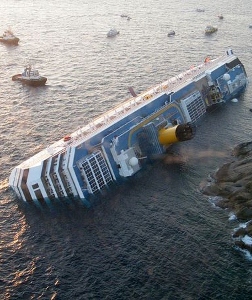Mock disaster helps shape-up contingency plan
 (CNS): Officials from Hazard Management and the Port Authority said that a recent mock cruise ship disaster exercise has helped government officials shape an emergency plan in the event of a real incident. As one of the most popular cruise ports-of-call in the region, it is important to be prepared and to respond appropriately and efficiently in case of such an incident, a spokesperson said. The mock major cruise ship ‘accident’ in George Town Harbour saw numerous officials, in particular from the emergency services, undergo the planned exercise. The operation, code-named ‘Exercise Save Vessel’, was the second comprehensive table-top exercise to test Cayman’s ability to respond to an incident involving a cruise ship. The first took place in 2007.
(CNS): Officials from Hazard Management and the Port Authority said that a recent mock cruise ship disaster exercise has helped government officials shape an emergency plan in the event of a real incident. As one of the most popular cruise ports-of-call in the region, it is important to be prepared and to respond appropriately and efficiently in case of such an incident, a spokesperson said. The mock major cruise ship ‘accident’ in George Town Harbour saw numerous officials, in particular from the emergency services, undergo the planned exercise. The operation, code-named ‘Exercise Save Vessel’, was the second comprehensive table-top exercise to test Cayman’s ability to respond to an incident involving a cruise ship. The first took place in 2007.
“This exercise was very useful, and helped us identify gaps in our plans, which will in turn allow us to improve our planning and response capabilities,” Omar Afflick said.
Meanwhile Joseph Woods Jr, manager of cruise operations at the Port Authority, said it was a valuable exercise where the agencies involved in emergency response work cohesively to fulfil their roles and responsibilities. Once evaluated, he said, future exercises will test specific components of the refined plan.
Disaster Management Adviser Frank Savage, Miami-based Prison and Law Enforcement Adviser Larry Covington, and Head of the Caribbean and Bermuda Section Tony Bates. all from the UK’s Foreign Commonwealth Office (FCO). observed the exercise. .
Savage said it was one of the most professional desktop exercises he seen. “I’m fairly confident that you now understand the magnitude of such a disaster … and I’m heartened and reassured of your proficiency in the area of disaster management,” he said but pointed out areas of the port response plans that need scrutiny and possible revision.
These issues include the need to consult with the owner of the vessel, minimising reputational damage and legal liabilities, dealing with the global media, managing and sorting the rescued passengers, and using the services of local tourism providers.
“While your hurricane shelters are the best in the region, they would be overwhelmed,” said Savage. He also spoke of the lessons learned from a similar exercise held in Miami last month for benefit of the major cruise lines. “Go back, refine it and come up with an improved response plan.”
Bates, who has seen several years’ service with the Governor’s Office in the Cayman Islands, also thought it “was a great learning exercise, and were such an event to occur the UK’s Disaster Coordination Group would begin their work “within the hour”. He said the FCO would also mobilise its Crisis Management Department and Press Office, working closely with Cayman’s Governor and government officials. The UK would also coordinate the use of assets offered by the USA and regional countries such as Honduras which have naval capacities.
Bates said that the Miami-based FCO Rapid Deployment Team would immediately come together to offer help from a distance, or to send assistance.
In this exercise the scenario saw a vessel with over 5,000 passengers and crew aboard hit a reef, rupture its hull and lose power in the process. The simulation exercise served to test the Port Disaster Contingency Plan as well and other plans of the Emergency Services and the National Emergency Operations Centre (NEOC).
The drill provided a credible representation of what could happen in a maritime disaster, and required the country’s response mechanism to be fully employed and tested. It incorporated the hierarchy of the government, a shipping agent, all emergency response entities and the 17 sub-committees of the National Emergency Operating Centre, as well as non-government organisations and private entities.
Category: Local News

